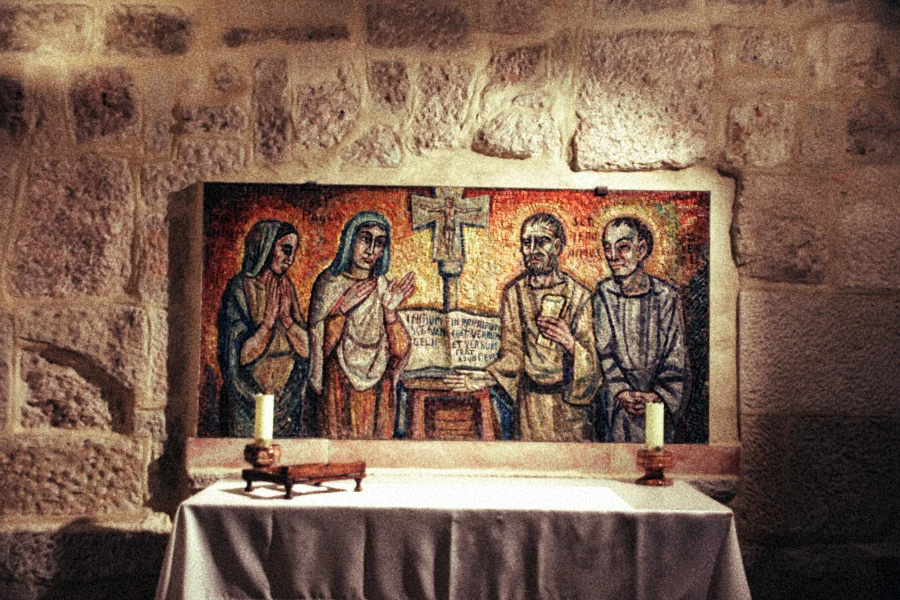The Ebionites, a sect emerging in the early centuries of Christianity, adhered strictly to Jewish laws while simultaneously embracing Jesus as the Messiah. The word Ebiōnaîoi , originating from Hebrew, specifically from the term Eynm, translates to ‘the poor’ or ‘the impoverished individuals.’ Their beliefs diverged significantly from mainstream Christian doctrine, leading to intense debates and eventual marginalisation. Scholars have unearthed texts that reveal their unique interpretations of scripture, highlighting a profound connection to Jewish heritage. These writings show how the Ebionites envisioned their faith as a continuation of Judaism rather than a separate entity. This perspective challenges traditional understandings and prompts deeper exploration into the complexities of early Christian identity and its varied expressions.
Who were the Ebonites?
As researchers such as Dr James Tabor study Ebionite texts or better said, citations from heresiologists more deeply, they discover many detailed ideas about thier beliefs. For example, the Ebionites believed it was crucial to live ethically and support their community, showing how much they valued Jewish traditions and vegetarism. They opposed animal sacrifices and would have seen people like Marcion of Sinope as heretics and vice versa. The Ebointes saw Jesus as a prophet, but he became a divine saviour through his baptism. He met the Jewish expectations of the Messiah by bringing redemption. This varied view challenges modern scholars to rethink the differences between Judaism and early Christianity, leading to discussions about identity, religious practices, and the historical background in which these beliefs grew. Unfortunately, we know very little about this Christian group, only from writings by critics like Irenaeus of Lyon, Jerome of Stridon, and Eusebius of Caesarea. Scholars are comparing them to other early Christian and Jewish groups and using texts such as the Dead Sea Scrolls to understand them better in their historical context.
The Gospel of the Ebionites

The Gospel of the Ebionites is acknowledged as a gospel harmony, preserved in fragments cited by Epiphanius, a church historian active in the late fourth century AD. The original title of this gospel remains uncertain, though its contemporary designation likely derives from the Ebionites, a sect of Jewish Christians that flourished during the second and third centuries. Epiphanius mistakenly refers to it as the ‘Hebrew’ gospel, claiming it is a summarized version of the Gospel of Matthew. However, a detailed examination of the surviving fragments reveals that it is, in actuality, a Greek interpretation of the Gospel of Matthew. While Irenaeus, a significant figure from the late second century, mentions the existence of this gospel, the bulk of our knowledge about its content comes from Epiphanius’s quotations. Notably, the Gospel of the Ebionites excludes the infancy narratives. Instead, it portrays both John the Baptist and Jesus as advocates of a vegetarian diet, with Jesus expressing his aim to abolish sacrifices. Scholars observe that “alongside the references to Passover, this suggests a critique of the Jewish Temple.” This places the Gospel of the Ebionites in a context akin to that of the Gospel of Matthew, as it grapples with “Jewish identity in the aftermath of the Temple’s destruction.” The proposed resolution to this dilemma is to “have faith in Jesus, the true interpreter of the Law.” Some scholars speculate that this gospel was likely written in the mid-second century, originating from either Syria or Palestine, but grounded in oral traditions and potentially influenced by other texts, such as the sayings of Jesus.
Ebionites and Nazarenes

The Ebionite and Nazarene movements were primarily composed of Jewish followers who initially adhered to the teachings of John the Baptist and later those of Jesus Christ. These groups were mainly situated in Palestine and surrounding regions, flourishing under the guidance of James the Just, who, according to Paul, was Jesus’ brother. The timeline for the prominence of these movements spans from 30 to 80 AD. The Ebionites were known for their strict observance of Jewish law, while the Nazarenes adopted a more lenient approach, embracing some of Paul’s innovations, such as allowing Gentiles to join the movement without the requirements of circumcision, Sabbath observance, and kosher dietary laws. However, the extent of the Nazarenes’ leniency remains somewhat ambiguous. Jerome’s writings suggest a distinction, labelling the Ebionites as more heretical compared to the relatively less heretical Nazarenes.
Historical sources highlight James the Just’s significant leadership role in the early Christian community, as reflected in the letters of Paul, the Gospel of Thomas, and the Sudo-Clementine Recognitions. It is crucial to understand that the Jewish community of this period was profoundly devoted to the Torah, meticulously following its commandments as interpreted by their esteemed rabbis. This commitment is also observed in the Greek version of the Gospel of Matthew. Such dedication to their religious customs significantly influenced the core beliefs and practices of these movements.
Final words

The examination of the Ebionites provides a compelling insight into the relationship between early Christianity and Judaism. Their strong commitment to Jewish law and distinctive interpretation of it, along with their ethical principles and recognition of Jesus as the Messiah, raise significant questions about identity formation within religious movements. This development was a prolonged process spanning many centuries, rooted in various Jewish groups that preceded them. Their belief system emerged from pioneering Jewish sects that existed on the fringes of the four primary Jewish movements: the Pharisees, Sadducees, Essenes, and Zealots. It is important to recognize that within these major movements, branches of similar perspectives arose, further complicated by the influences of Greek, Roman, and Mesopotamian philosophies on Judaism over the centuries.
After the rise of mainstream Christianity in the 3rd century, several heretical groups, including the Ebionites and the Sethians, faced marginalization within the Roman Empire. These groups contributed to shaping the development of Islam. Notably, the Sethians rejected the idea of Jesus’ crucifixion, a belief that is similarly denied in Islam.
As modern scholars examine their beliefs and practices through the writings of church fathers and various ancient texts, they reveal a rich and complex narrative that not only deepens our understanding of early Christian diversity but also prompts reflection on how these historical perspectives might still resonate and challenge contemporary Christian communities.

